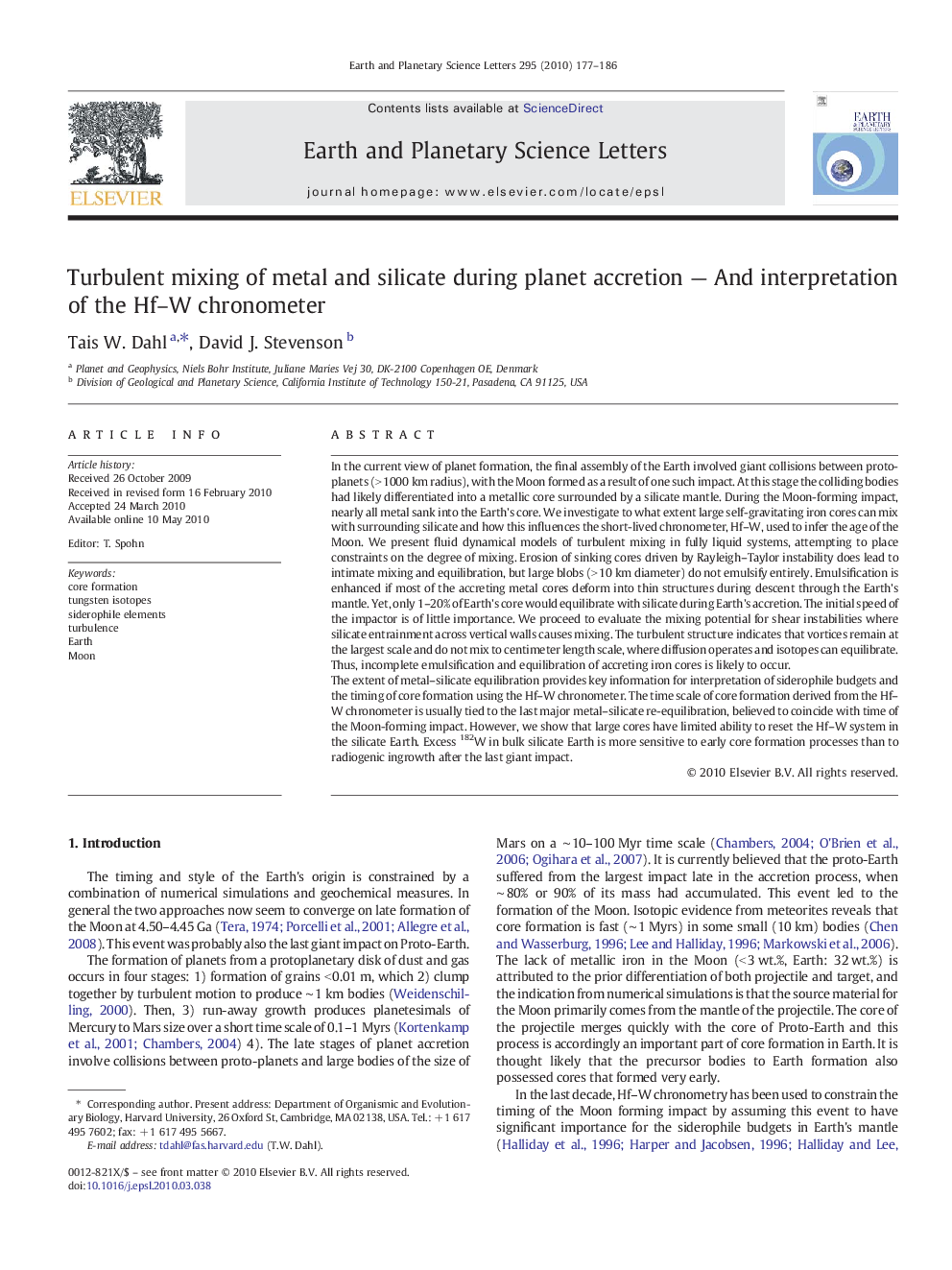| کد مقاله | کد نشریه | سال انتشار | مقاله انگلیسی | نسخه تمام متن |
|---|---|---|---|---|
| 6430938 | 1634850 | 2010 | 10 صفحه PDF | دانلود رایگان |

In the current view of planet formation, the final assembly of the Earth involved giant collisions between proto-planets (>Â 1000Â km radius), with the Moon formed as a result of one such impact. At this stage the colliding bodies had likely differentiated into a metallic core surrounded by a silicate mantle. During the Moon-forming impact, nearly all metal sank into the Earth's core. We investigate to what extent large self-gravitating iron cores can mix with surrounding silicate and how this influences the short-lived chronometer, Hf-W, used to infer the age of the Moon. We present fluid dynamical models of turbulent mixing in fully liquid systems, attempting to place constraints on the degree of mixing. Erosion of sinking cores driven by Rayleigh-Taylor instability does lead to intimate mixing and equilibration, but large blobs (>Â 10Â km diameter) do not emulsify entirely. Emulsification is enhanced if most of the accreting metal cores deform into thin structures during descent through the Earth's mantle. Yet, only 1-20% of Earth's core would equilibrate with silicate during Earth's accretion. The initial speed of the impactor is of little importance. We proceed to evaluate the mixing potential for shear instabilities where silicate entrainment across vertical walls causes mixing. The turbulent structure indicates that vortices remain at the largest scale and do not mix to centimeter length scale, where diffusion operates and isotopes can equilibrate. Thus, incomplete emulsification and equilibration of accreting iron cores is likely to occur.The extent of metal-silicate equilibration provides key information for interpretation of siderophile budgets and the timing of core formation using the Hf-W chronometer. The time scale of core formation derived from the Hf-W chronometer is usually tied to the last major metal-silicate re-equilibration, believed to coincide with time of the Moon-forming impact. However, we show that large cores have limited ability to reset the Hf-W system in the silicate Earth. Excess 182W in bulk silicate Earth is more sensitive to early core formation processes than to radiogenic ingrowth after the last giant impact.
Journal: Earth and Planetary Science Letters - Volume 295, Issues 1â2, 15 June 2010, Pages 177-186